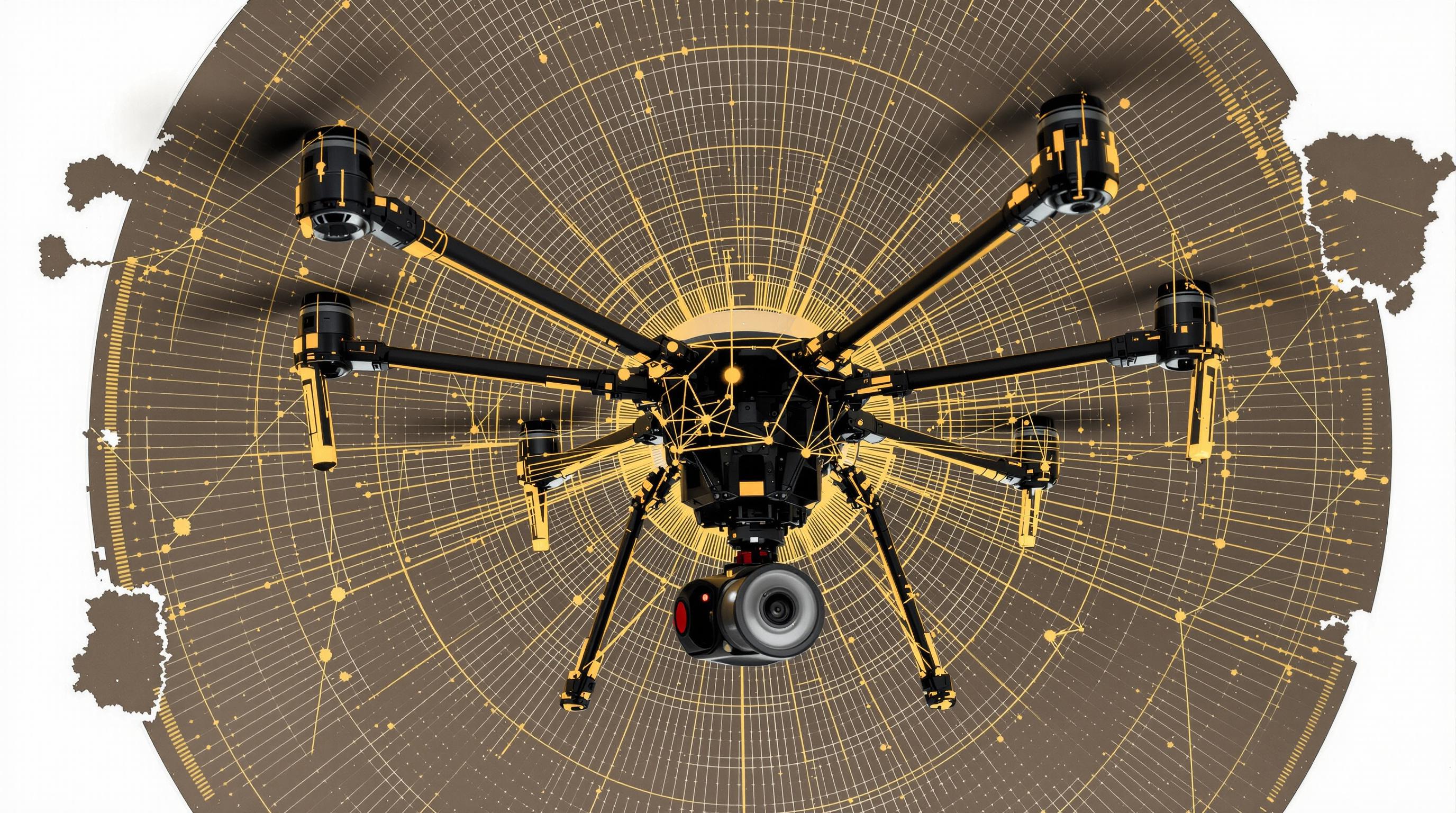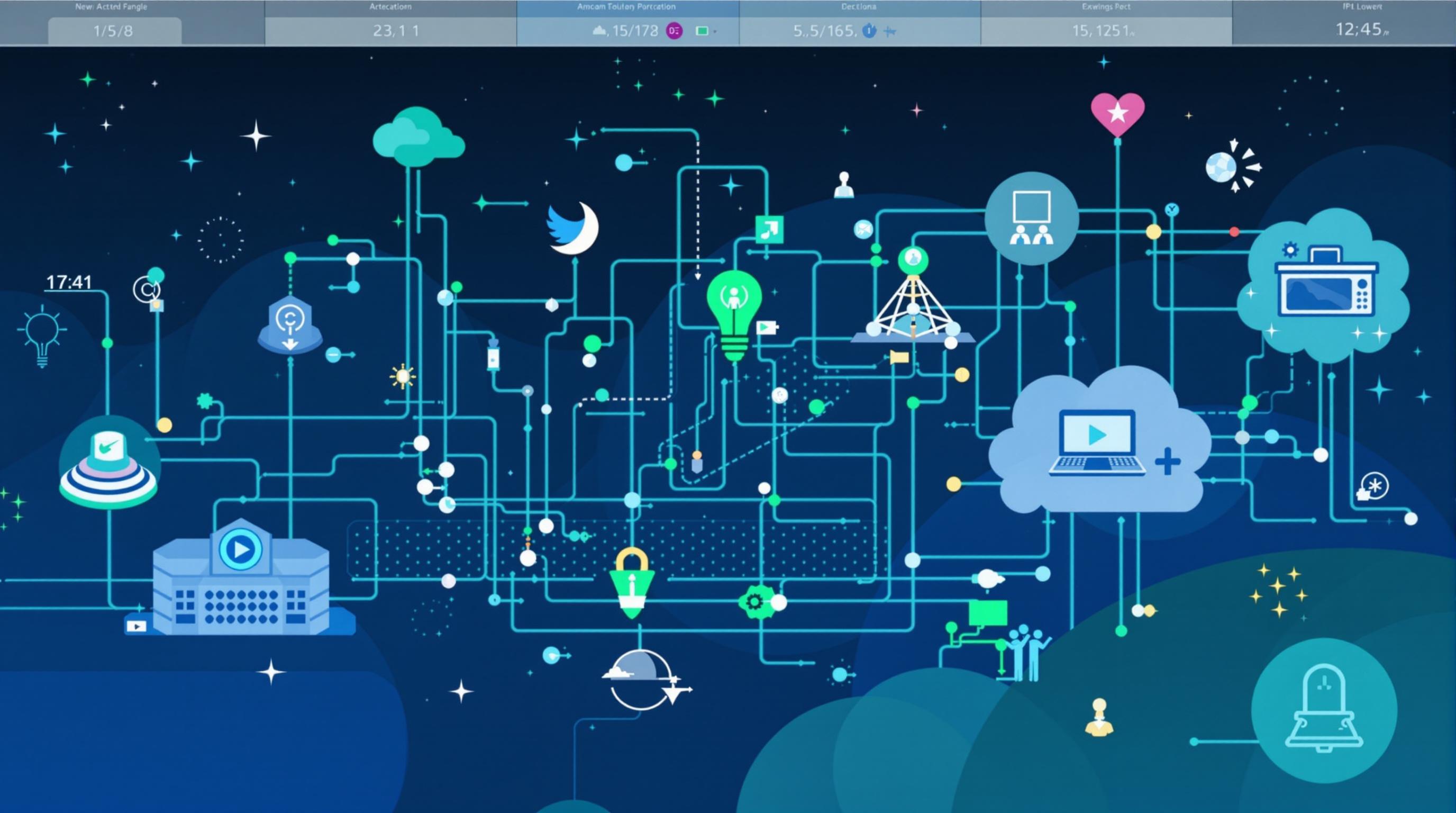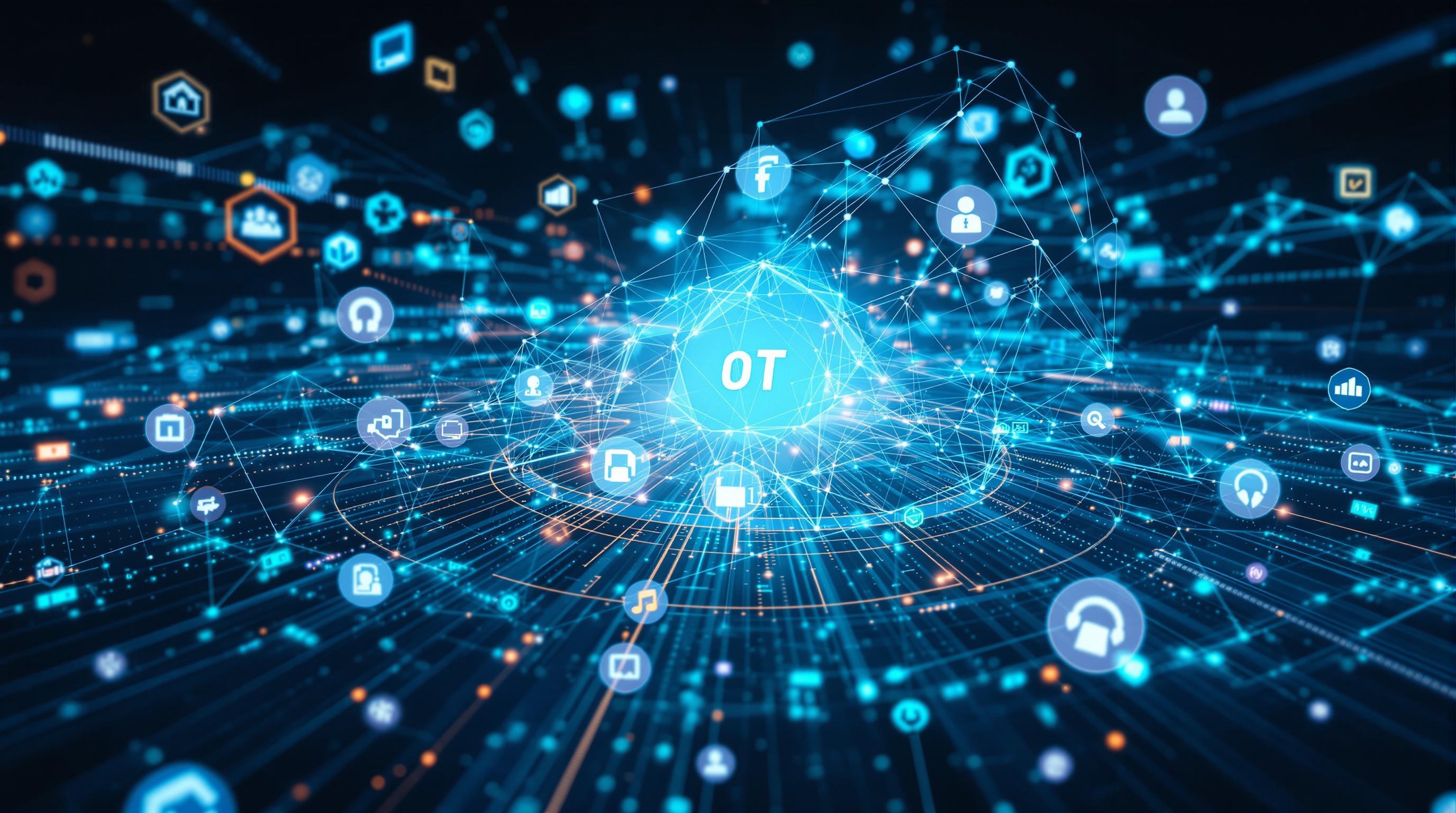Related Articles
- Harnessing Nostalgia: How Memory Mapping Can Inspire Innovative Urban Infrastructure Solutions
- Revealing the Invisible: How Urban Legends Influence Public Perception of Infrastructure Projects
- Whimsical Structures: How Playgrounds Can Inspire Innovative Approaches to Urban Infrastructure Development
- The Enigmatic Impact of Dark Fiber Networks on the Future of Digital Ecosystems and Their Capacity to Scale
- Beyond the Horizon: Exploring the Impact of Cultural Nuances on Global Digital Infrastructure Expansion
- Whispers of the Future: How AI-Driven Edge Computing Redefines Network Resilience and Flexibility
11 Provocative Innovations: How Autonomous Drones are Creating New Paradigms for Internet Scalability Solutions
11 Provocative Innovations: How Autonomous Drones are Creating New Paradigms for Internet Scalability Solutions
11 Provocative Innovations: How Autonomous Drones are Creating New Paradigms for Internet Scalability Solutions
Introduction to Autonomous Drones
Autonomous drones, once the domain of military and recreational enthusiasts, have rapidly emerged as pivotal players in the world of technology and logistics. Their application extends beyond mere aerial photography and surveillance; they are beginning to redefine how we think about information distribution and internet scalability. As we delve into this exploration, it is essential to recognize their potential to bridge the gaps in connectivity, especially in remote and underserved areas.
The convergence of drone technology with Internet of Things (IoT) devices represents an innovative paradigm shift, as these unmanned aerial vehicles (UAVs) become integral to data transmission and network performance. This shift suggests a future where aerial infrastructure can dynamically support both existing and emerging digital ecosystems, heightening the necessity for reliable internet services.
In this article, we will investigate eleven groundbreaking innovations that demonstrate how autonomous drones are reshaping considerations for internet scalability. This inquiry will illuminate the profound impact of these technological advancements on connectivity standards and socio-economic dynamics.
1. Aerial Data Centers
One of the most intriguing innovations is the concept of aerial data centers. Autonomous drones can potentially be transformed into mobile data centers, equipped with necessary computing components to host cloud services offline. Such flexibility enables rapid deployment of computation where it is most required, thus alleviating pressure from terrestrial infrastructure.
This innovation not only improves scalability but also provides a resilient solution during natural disasters when ground communications might be compromised. By ensuring continuous data accessibility, aerial data centers can function as a vital tether to online services, creating reliability in dire circumstances.
Moreover, advances in lightweight computing technologies and energy-efficient systems would further enhance the feasibility of this drone-based approach, ushering in a new era where cloud services are genuinely omnipresent, combatting the limitations presented by traditional stationary data centers.
2. Real-time Connectivity Solutions
Autonomous drones excel in providing real-time connectivity solutions, particularly for areas lacking robust internet infrastructure. By serving as aerial relay stations, drones can transmit data over considerable distances, creating a mesh network that expands internet access to remote locations. This use case is notably significant for emergency relief operations and developments in rural areas.
The efficiency of drones in quickly establishing networks underscores their role in emergency management. In scenarios where conventional internet services fail, drones can swiftly restore connectivity, ensuring that necessary information and resources reach those in need without delay. This not only saves lives but fosters community resilience.
As we consider the far-reaching implications, the integration of real-time connectivity via drones paves the way for smarter cities, improved agricultural practices, and even the implementation of IoT solutions in environments that were previously unreachable. This innovation encourages collaboration and data sharing in a variety of sectors.
3. Enhanced Data Collection
Autonomous drones empowered with advanced sensing capabilities and AI-driven analytics introduce unprecedented opportunities for enhanced data collection. By capturing high-resolution images and sensor data, drones contribute to vast troves of information that can be used for infrastructure management, agriculture, environmental monitoring, and urban planning.
The implications of this data collection extend well beyond the realms of individual sectors. Continuous monitoring provides an intricate understanding of systems and enables proactive decision-making. As drones collect data, they can feed it directly into centralized systems, allowing for real-time analysis that enhances various operational strategies.
Furthermore, this capability builds a more responsive and adaptive technological ecosystem, where data informs actionable insights, thus facilitating optimal resource allocation and paving the way for innovative solutions to emerge across numerous parameters.
4. Cost-effective Delivery Services
The deployment of drones in delivery services stands to revolutionize logistics by drastically reducing costs and delivery times. Companies harnessing autonomous drones for last-mile delivery can navigate urban environments more effectively than traditional vehicles while minimizing traffic congestion and emissions.
By offering an economical alternative to conventional delivery methods, drone technology opens new avenues for e-commerce and local businesses alike. The ability to deliver goods on-demand not only improves customer satisfaction but also gives businesses the agility to compete in an increasingly digital marketplace.
As drone delivery services expand, they will necessitate new regulatory frameworks and operational strategies, offering a unique opportunity for cities to rethink their infrastructural landscapes, ultimately integrating technology in more harmonious ways.
5. Disaster Management and Recovery
In the face of natural disasters, the rapid deployment of autonomous drones can become a crucial lifeline for affected areas. By swiftly mapping disaster zones and assessing damage, drones facilitate immediate response operations, enhancing situational awareness for rescue teams.
Beyond damage assessment, drones can deliver critical supplies such as medical kits and food to areas that would otherwise be inaccessible. This timely intervention directly impacts survival rates and accelerates recovery efforts, exemplifying the potential for drones to save lives in scenarios where traditional logistics fail.
Moreover, as communities strive to build resilience against climate change, integrating drone technology into disaster management protocols can create more robust responses, enabling adaptability and improving future preparedness strategies.
6. Agricultural Innovations
The agriculture sector stands to benefit immensely from autonomous drones, which can monitor crop health, apply fertilizers, and even plant seeds with precision. By incorporating aerial data collection and real-time analytics, farmers are better equipped to make informed decisions regarding resource utilization and crop management.
The increased efficiency affording precision agriculture not only helps in sustaining yields but also conserves essential resources such as water and fertilizers, aligning productivity with sustainability goals. This transformative approach is crucial in tackling food security challenges as the global population continues to rise.
Furthermore, the aggregation of aerial data facilitates extensive research opportunities, contributing to the evolution of agricultural practices and the introduction of innovative techniques that prioritize ecological balance alongside production demands.
7. Environmental Monitoring
Autonomous drones equipped with environmental sensors are becoming indispensable in monitoring climate change impacts and ecosystem dynamics. Their ability to collect data on air quality, temperature variations, and wildlife movements helps researchers and policymakers gain insights that are essential for developing effective environmental strategies.
Continuous observation and data-driven insights enhance our understanding of complex environmental systems, enabling better management of natural resources and biodiversity conservation efforts. With the urgency of climate issues, drones can provide real-time feedback, establishing a proactive approach to environmental stewardship.
As a result, integrating autonomous drones into environmental monitoring initiatives promotes sustainable development and supports international efforts to combat climate change, fostering a collective sense of responsibility towards the planet.
8. Infrastructure Inspection
The efficiency of autonomous drones in infrastructure inspection, particularly in hard-to-reach areas like bridges and power lines, brings a new level of safety and precision. These aerial devices can cover large distances quickly while capturing high-definition imagery and data on structural integrity.
This innovation reduces human risk, particularly in environments where traditional inspection methods are costly or hazardous. Drones can complete inspections in a fraction of the time, which improves scheduling and reduces downtime for public infrastructure.
Regular inspection protocols utilizing drones lead to enhanced maintenance strategies that not only prolong infrastructure lifespan but also promote greater public safety. As this technology matures, the ripple effects across sectors reliant on infrastructure will be significant.
9. Smart City Applications
The integration of autonomous drones plays a pivotal role in the development of smart cities. By enabling real-time analytics and data collection, drones help urban planners optimize resource distribution and improve public services, thereby enhancing the overall quality of city living.
With their ability to monitor traffic, assess air quality, and manage public spaces, drones offer a comprehensive approach to urban governance. This capability leads to more tailored policies that respond effectively to the needs of citizens, fostering community engagement and satisfaction.
Furthermore, as autonomous drone technology continues to evolve, it will spur additional innovations, leading to a modernization of city infrastructure that prioritizes efficiency and sustainability.
10. Ethical Considerations and Future Directions
With the advent of autonomous drones, key ethical considerations must be assessed. Privacy concerns arise in the realm of aerial surveillance and data collection that could infringe upon individuals' rights. It is paramount that regulatory frameworks are established to govern drone operations responsibly and ethically.
Additionally, the potential for misuse of drone technology poses threats, necessitating vigilance and accountability within industries that adopt these innovations. Businesses and governments alike must collaborate to ensure that drone applications are aligned with ethical principles that prioritize societal good.
Looking to the future, as drone technology continues to develop and penetrate multiple sectors, a commitment to responsible practices will be essential to harness their potential effectively while mitigating risks associated with their use.
Conclusion
In summary, the advent of autonomous drones is heralding transformative changes poised to redefine internet scalability solutions. From enabling real-time connectivity to fostering innovative agricultural practices, drones are set to become invaluable assets in an evolving digital landscape. Their adaptability and efficiency hint at a future rich with potential and opportunities.
Simultaneously, it is crucial to remain cognizant of the ethical implications and requisite regulatory measures necessary to mitigate risks linked to drone technology. By fostering responsible frameworks, we can ensure that the profound benefits they offer can be experienced widely.
As we witness these paradigmatic shifts unfold, it becomes increasingly clear that the innovative capabilities of autonomous drones will shape the socio-economic fabric of our world, connecting people and communities in ways previously unimaginable.




